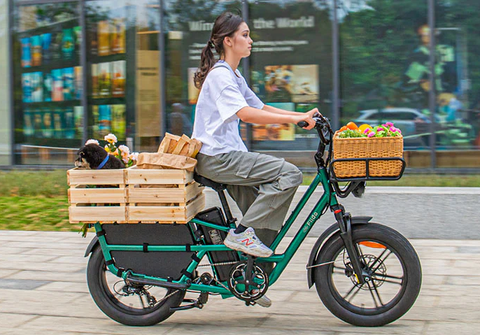In the market for buying an electric scooter in the UK? Here are our top tips on what to look for.
Range
The range is how far you can scoot before the battery runs out. Lightweight models might do around 10 miles on a single charge due to small batteries. Standard models typically have a range of around 15 to 25 miles. Premium models might well exceed 30 miles.
The exact range depends on things about the scooter - such as battery size, motor power and the scooter weight - as well as how you use it, such as your weight and speed.
Remember, too, that after a few hundred charges (more with premium batteries), your battery will start to lose maximum power, reducing your range.
Key things to consider: how often you’ll want to recharge and where you’ll do so.
Weight
Weight is important not just because it affects range, but because you’ll often have to carry your scooter (although some let you fold them in such a way that you can pull them like a wheely suitcase).
This is less of an issue off-road but if you’re buying a scooter in the hope they will be legalised for commuting, think about what you can carry. A 15kg scooter weighs the same as a 3 year old or an older kids’ bike.
Note that scooters have a maximum load weight - which includes your clothes and any bag, and is often around 15 stone.
Key things to consider: where will you store the scooter and how hard will you find carrying it?
Size
As with weight, size matters - but how much depends on your usage. For commuting (reminder that private e scooters aren’t yet legal on UK public roads), you might need to store it in a car boot or a train and a folding model might be best.
Folding models help with size. If you want a foldable scooter, check how much of it folds (EG just the stem or the handlebars too), and the size once folded.
Size also determines how easy you’ll find to stand on it - your shoe size vs the platform is something to consider, as is your height vs the stem height. These will determine your riding position and how comfy it is.
Key things to consider: how big are you, where the scooter will need to be stored and how foldable it is.
Speed and power
Scooters are often restricted to 15.5mph for international legal reasons although there are models that go faster. Remember you can’t ride privately-owned scooters on public roads in the UK.
Power matters though - it’s expressed in watts (W) and there are two numbers - the rated wattage and the maximum. The rated motor spec is what the motor is designed to run at most of the time. The peak power can be used if necessary but doing so for too long would wreck the motor.
More watts mean you can accelerate faster and the scooter can go up steeper hills (many models will tell you the hill angle they can cope with - a 10% hill is about 6 degrees). 250W is the minimum we’d consider - go at least 350W if you'll travel on steep hills or you’re heavier.
The faster you go, the more you’ll need to brake. Physical brakes are better as they slow you down over a much shorter distance than electronic brakes that use the motor to slow the scooter.
With physical brakes, you’ll need to check they aren’t worn out periodically. Your options are: foot brakes where you press down on the rear wheel; drum brakes inside the wheel hub; and disc brakes that cost more but are lighter and more effective (giving a weight and power advantage).
Key things to consider: where you’ll be travelling determines how many watts you’ll need. Make sure you compare the rated power. Where you scoot will also determine what level of braking you think you’ll need.
Ride comfort - suspension and tyres
If you’re scooting off road, ride comfort will be a big factor. But it can ruin the enjoyment on roads as well.
Some models have suspension (at the front, back or both) to make riding more comfortable. Others try to achieve this through pneumatic rather than solid tyres. High end models have suspension and good tyres.
Solid tyres are always inferior comfort-wise to pneumatic ones but don't require pumping up and can't puncture (if you have pneumatic ones, consider puncture prevention fluid).
We advise that you avoid wheels less than 10 inches diameter. Smaller wheels are less comfortable to ride and more likely to struggle with potholes.
The heavier you are, the more of an issue ride comfort is.
Key things to consider: the terrain you’ll travel on will determine what you’ll need to make your ride comfortable.
Waterproof and weather
Watch for the IP rating - the last number is crucial. IPx5 is better than IPx4 (the x can be a number) and we’d recommend it in British weather.
Key things to consider: What weather will you be riding in?
Price
Budget scooters cost up to £500 or so. Watch out for really cheap ones, especially if you’re buying from unknown brands online with no obvious way to enforce the warranty. Budget scooters will often be lower power, smaller and unlikely to have any comfort features.
Mid range models up to £800/£900 will have more power, better ride quality and a better battery - this means they often weight twice as much as budget models. Above these prices, you should be getting high-end features such as dual motors.
Other features
You might also be interested in adjustable handlebar height, a display screen so show battery life or speed, foldability, the brightness of front and back lights. And think about e scooter insurance.


